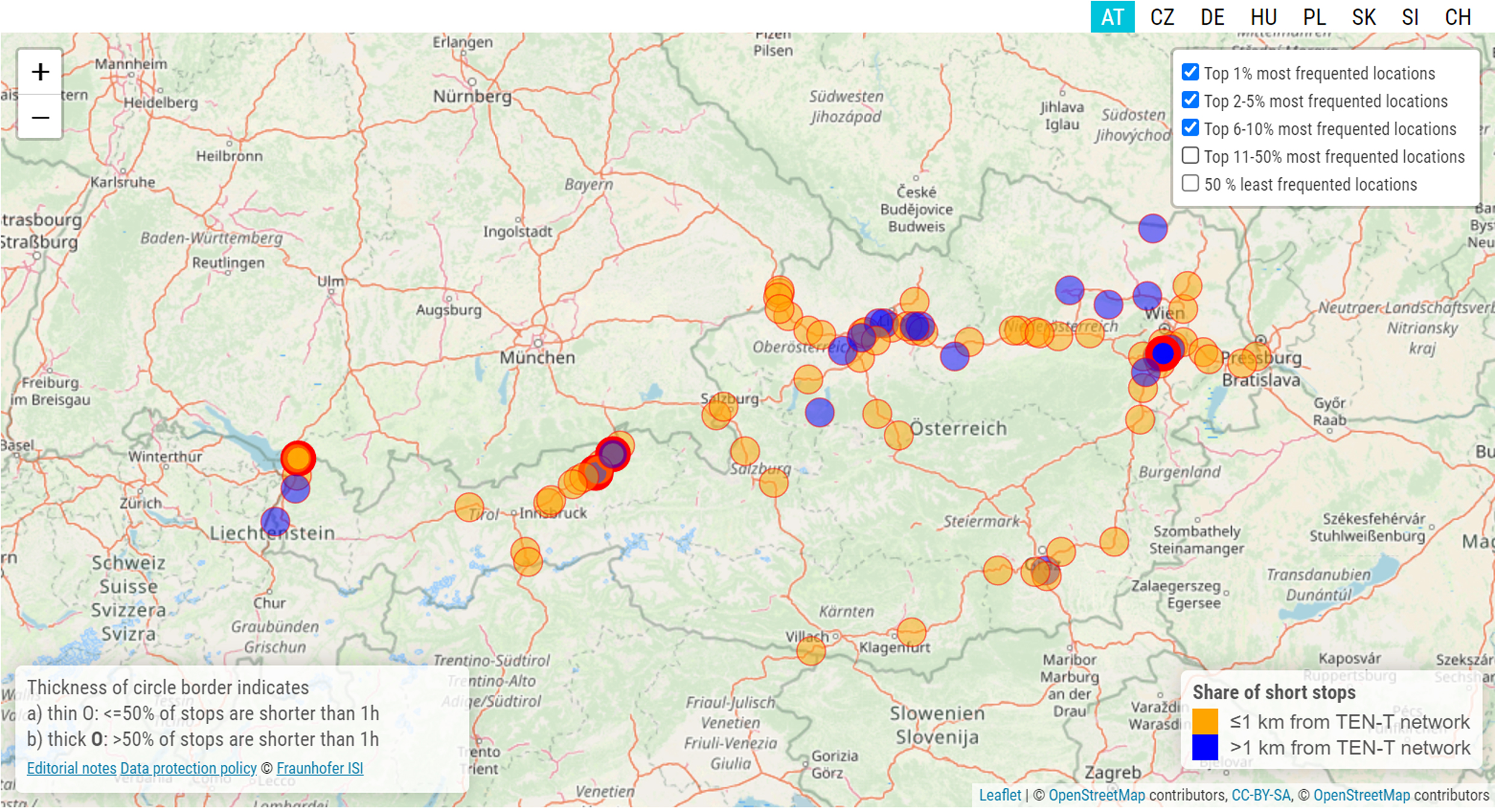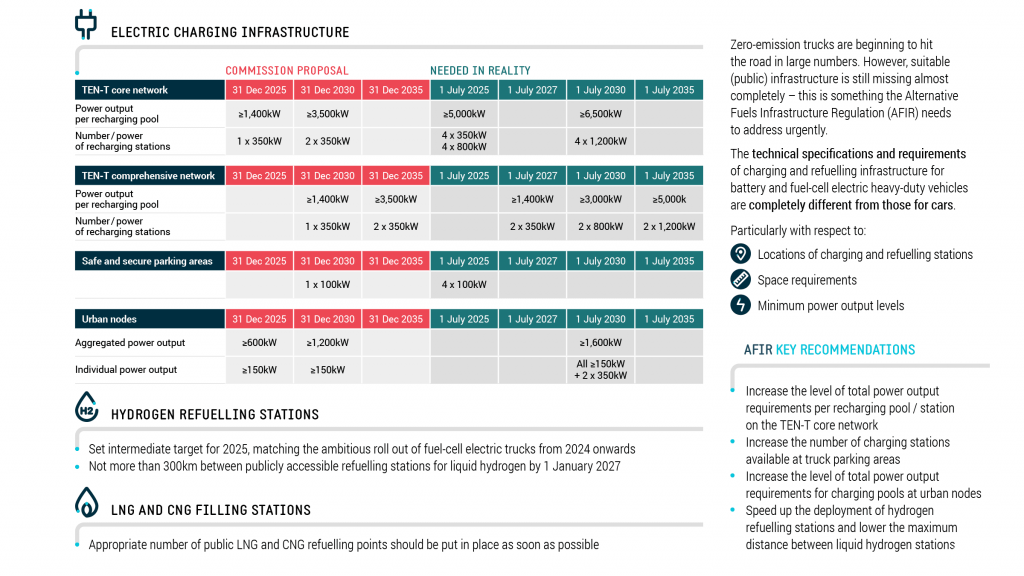Interactive maps – Electric trucks: stop locations, central Europe

Battery electric trucks will have to play a major role in the decarbonisation of road freight transport. If a sufficiently dense EU-wide network of suitable charging stations is rolled out, their market uptake is expected to increase rapidly over the next few years.
One important question is: where are the best locations to start with the installation of charging stations for heavy-duty vehicles? From an operations point of view, chargers are best placed where trucks already regularly stop today.
In order to pinpoint the top priority locations, ACEA tasked Fraunhofer ISI to help analyse a unique dataset compiled by seven truck manufacturers covering the GPS coordinates of some 400,000 trucks in operation throughout Europe. ACEA published the first results of the analysis in June 2021.
This dataset has now been analysed in even more detail to better understand the duration of stops at individual locations and thus help prioritise the installation of suitable chargers.
The zoomable maps below give an insight into these truck stop locations in central Europe (down to a 200m radius), differentiated by their proximity to the TEN-T network (core and comprehensive) and filtered by utilisation, in this case based on long-haul vehicle operations.
The countries covered in these regional maps are:
- Austria (AT)
- Czech Republic (CZ)
- Germany (DE)
- Hungary (HU)
- Poland (PL)
- Slovakia (SK)
- Slovenia (SI)
- Switzerland (CH)
The top 10% most utilised locations should be fully equipped with suitable chargers no later than 2027. A minimum network of charging stations must be fully operational by 2030 at the latest.
Locations with short truck stops will require high-performance charging (megawatt charging system, or MCS). Locations with longer truck stops will require overnight chargers
Short truck stops (MCS chargers)
Long truck stops (overnight chargers)
The top 10% most utilised truck stop locations should be fully equipped with suitable chargers no later than 2027.
Important to know
The identified locations are suitable for the roll-out of charging infrastructure from a logistics point of view. Defining exactly which locations to use and how many charging points each should have requires additional analysis and an evaluation of criteria such as: available electricity grid power, existing local initiatives, DC electric charging infrastructure for passenger cars already present, and many more.


